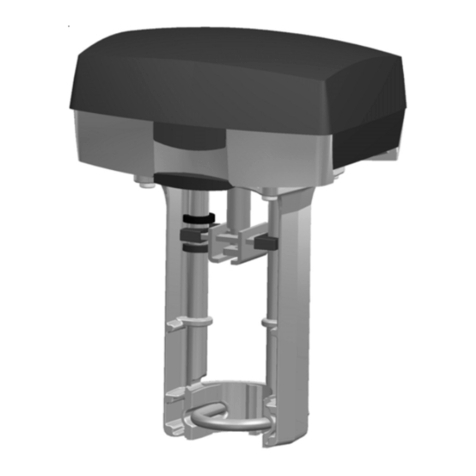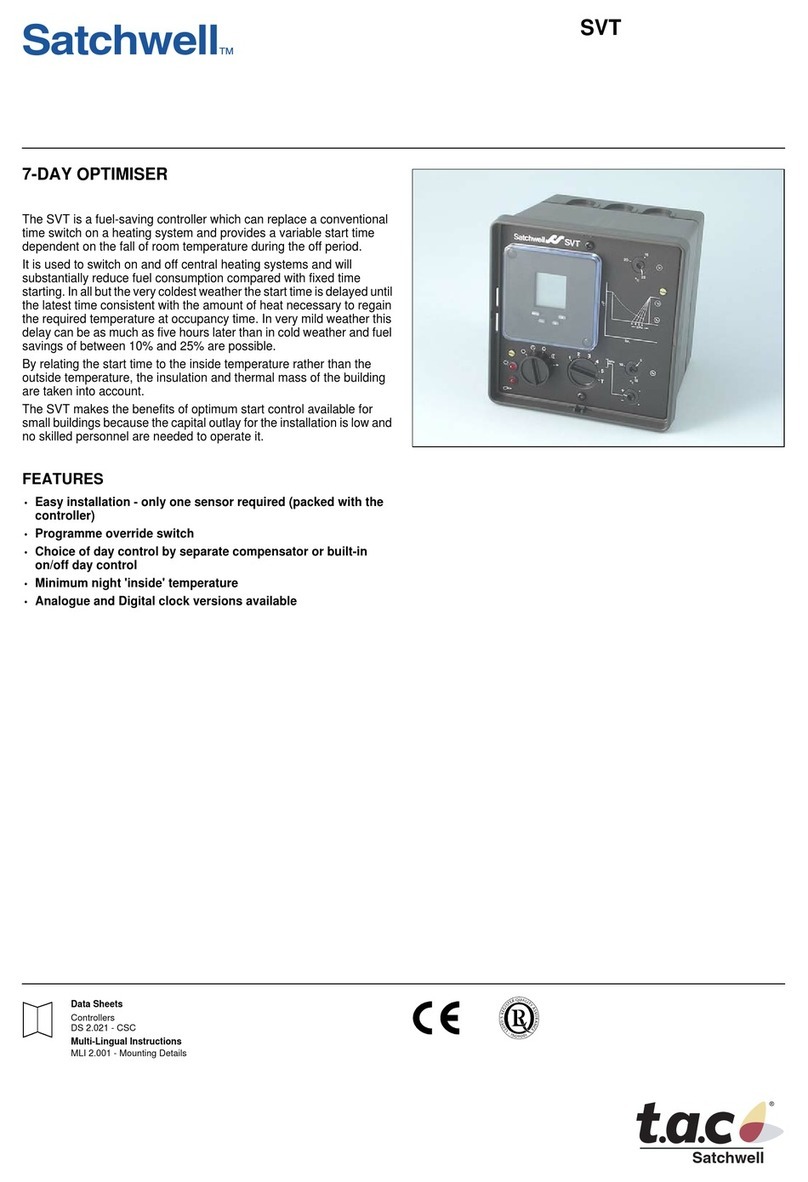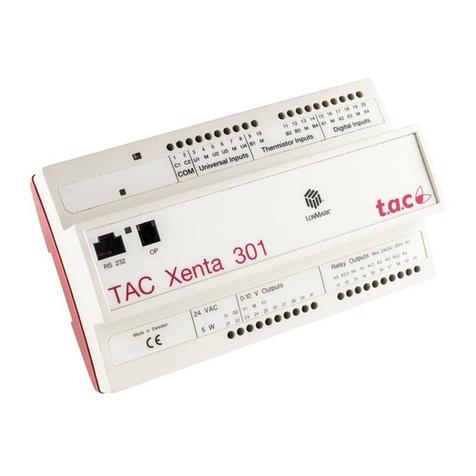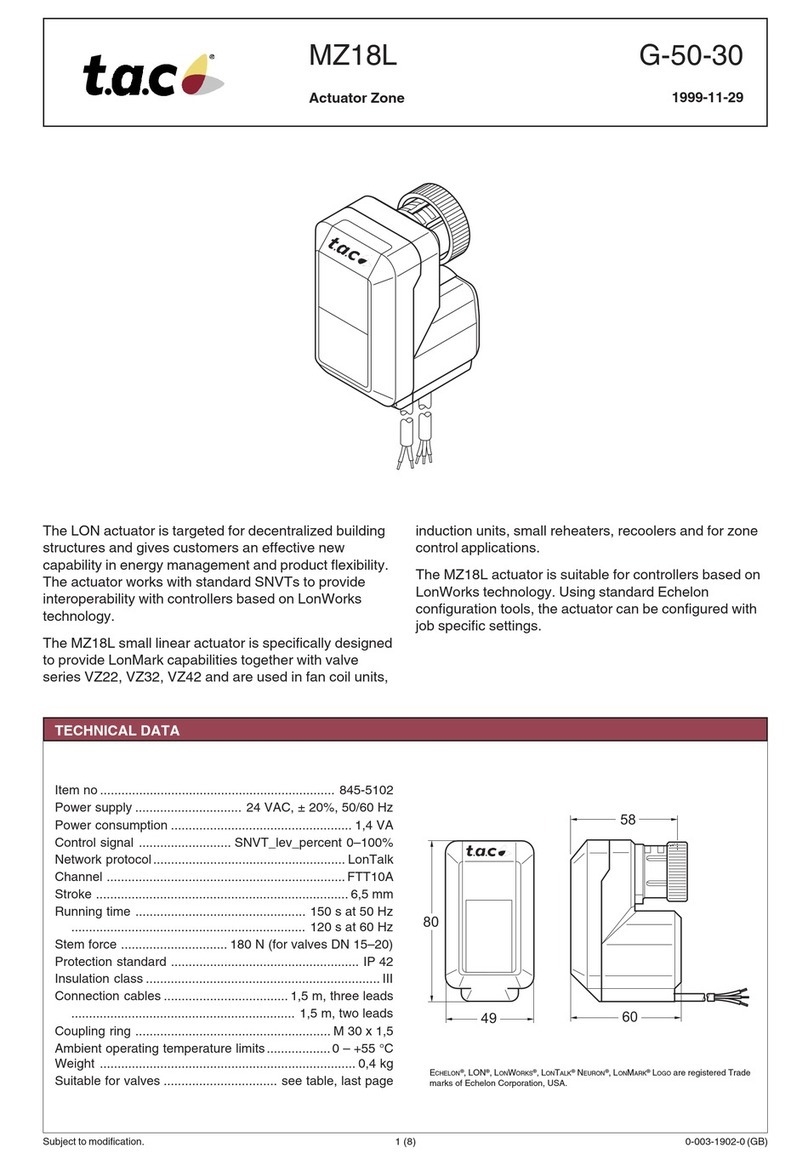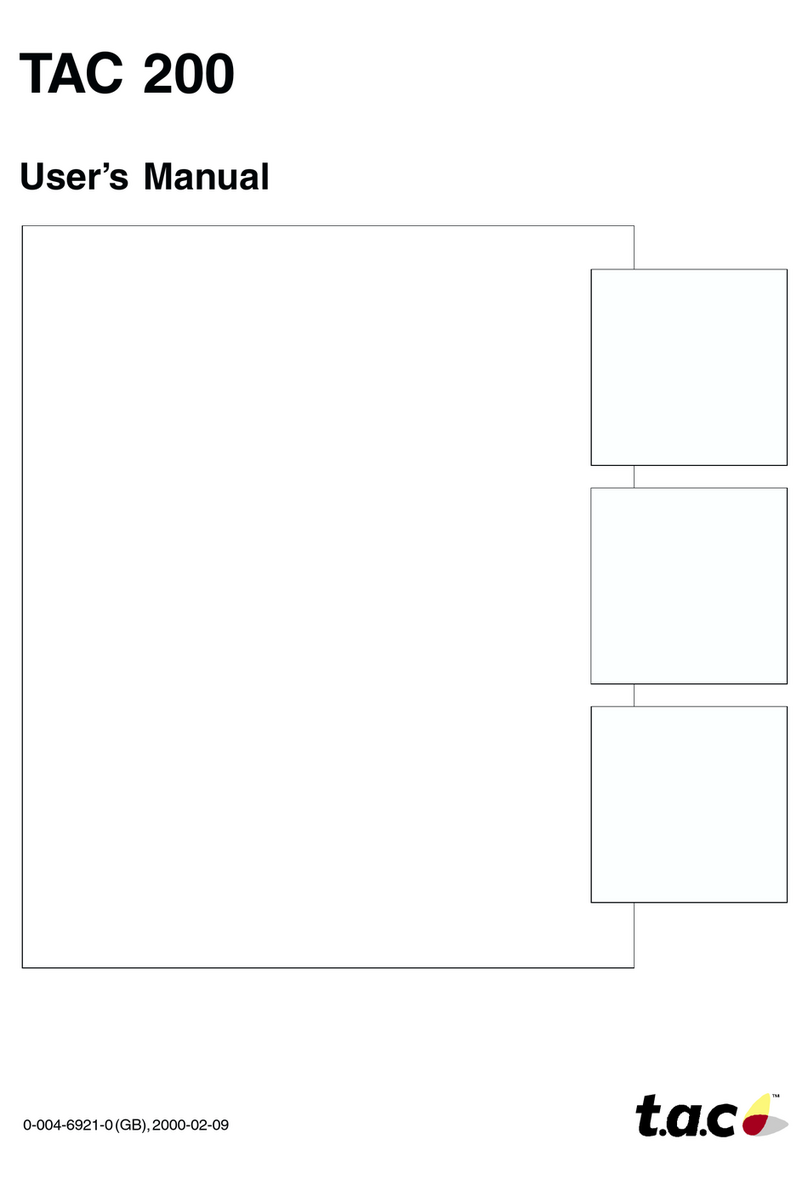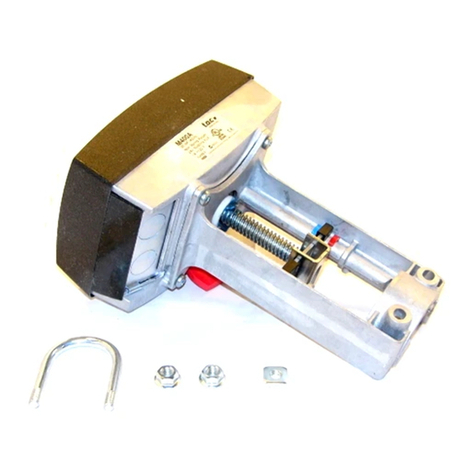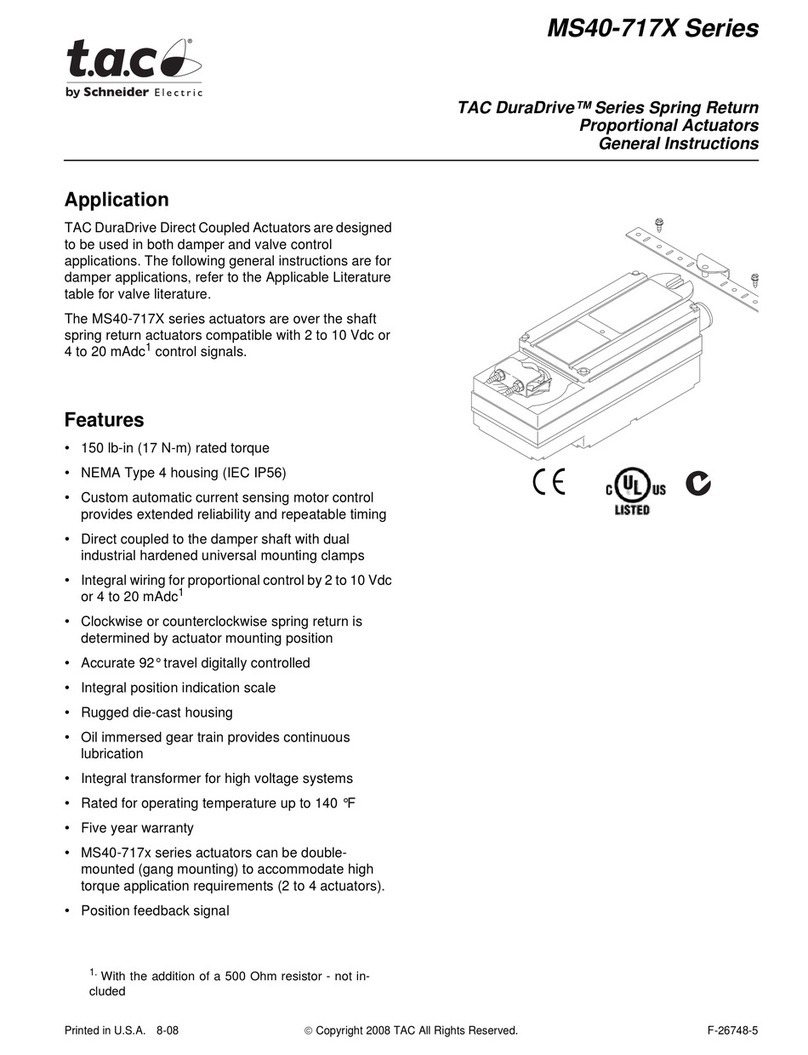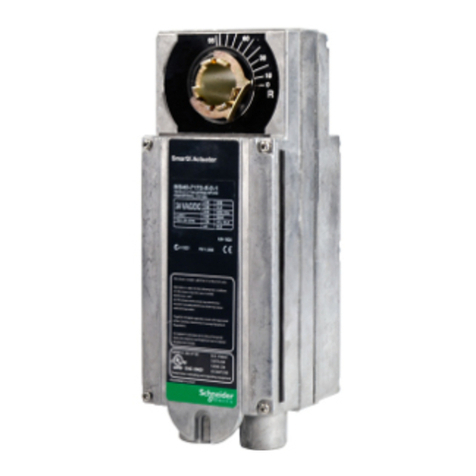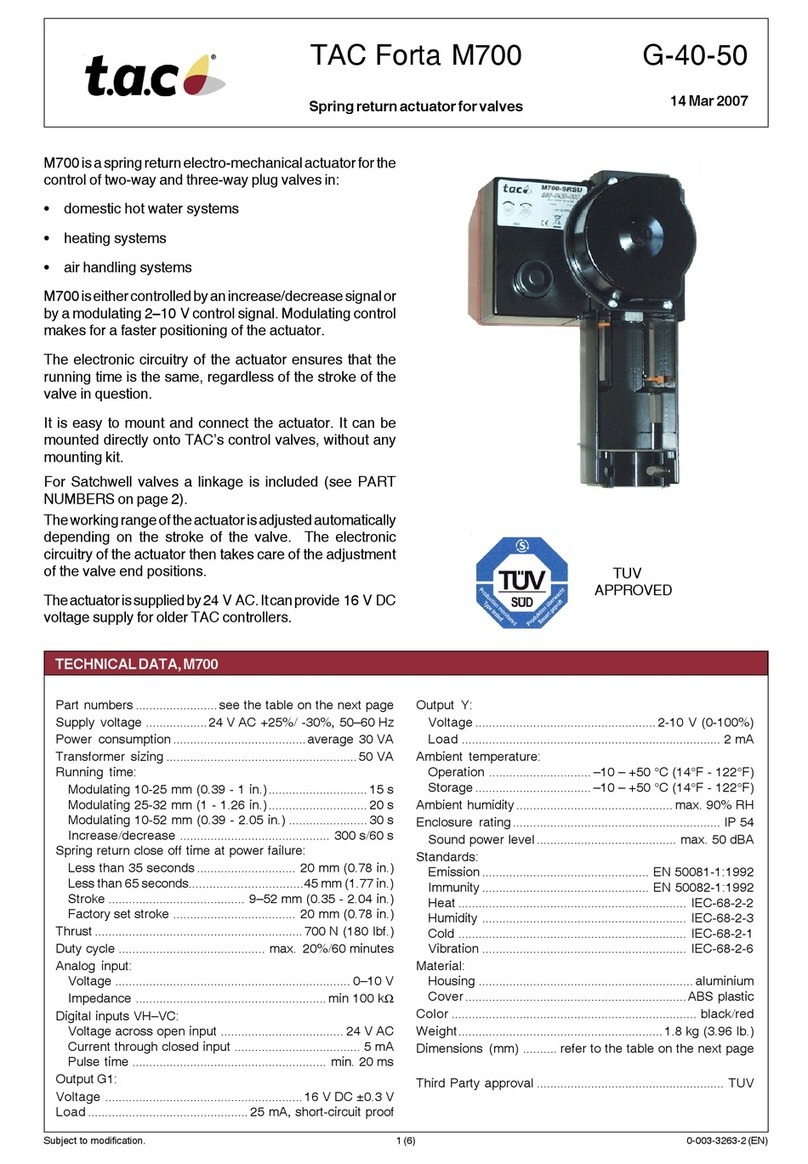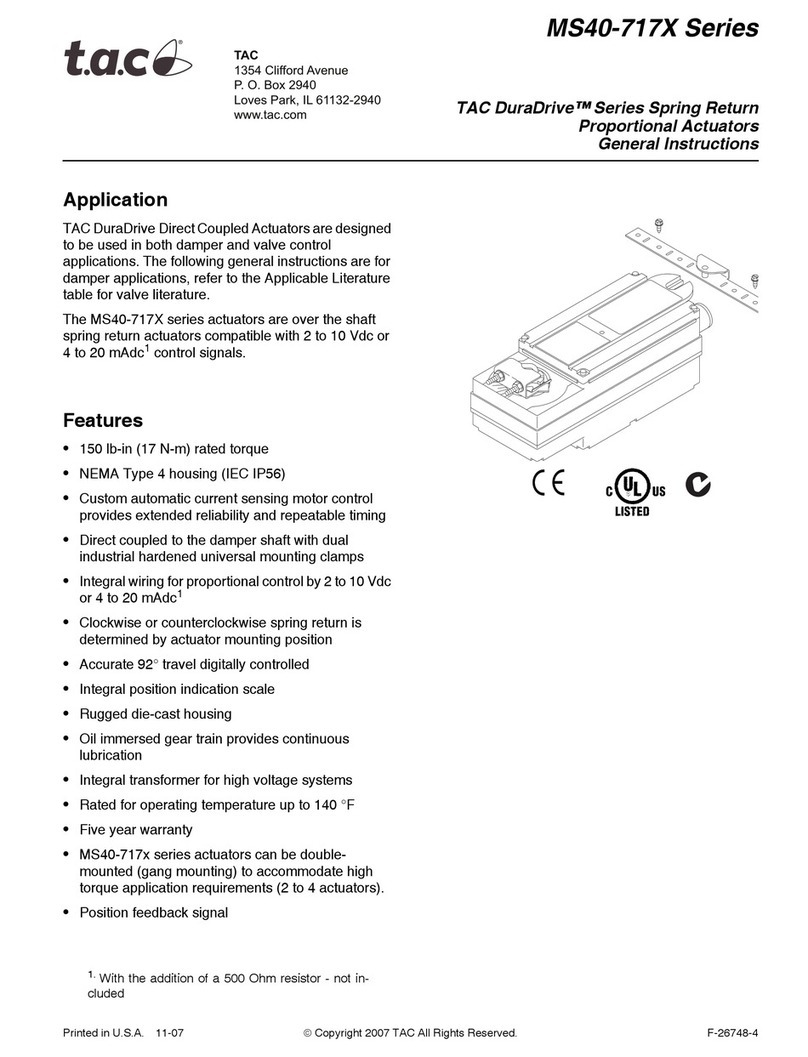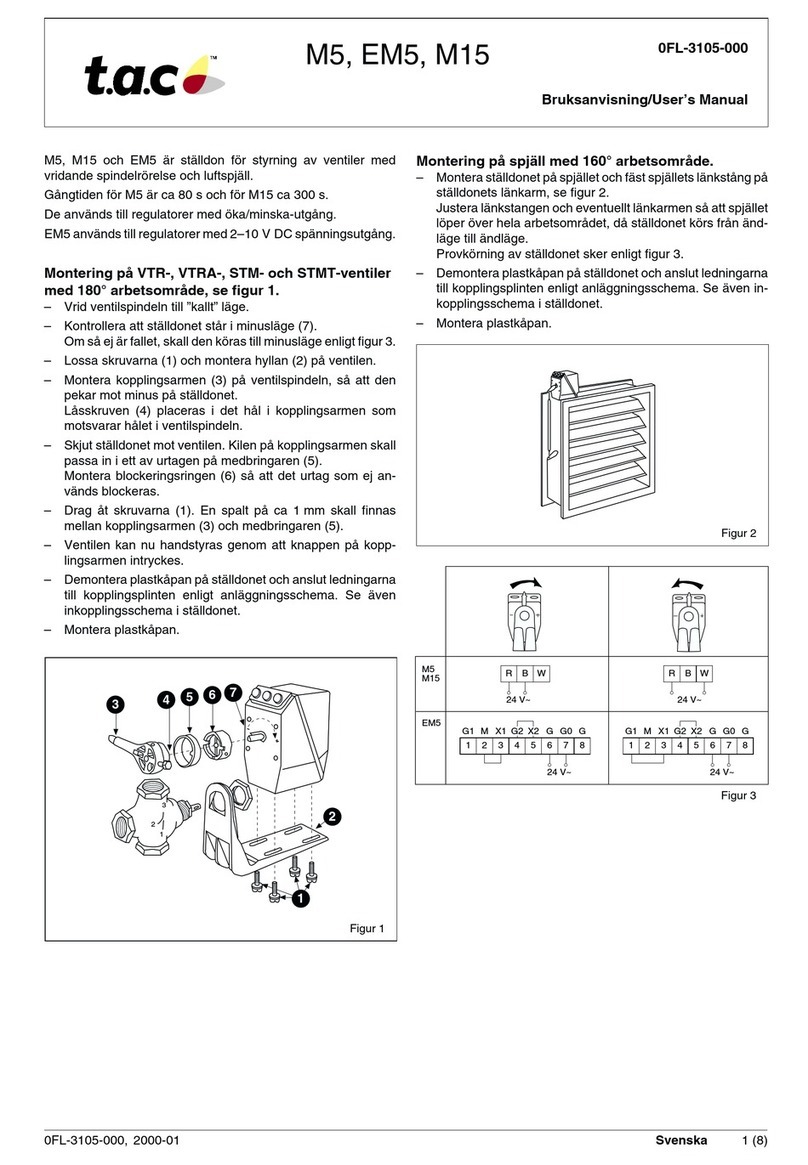
F-19449-5 © Copyright 2006 TAC All Rights Reserved. 5
Mounting Instructions (Refer to Figure 5)
1. Hold the actuator up to the duct in an appropriate position
and mark the four (4) mounting hole positions.
2. With an appropriate drill or punch, pierce the mounting
holes marked in step 1.
3. Using four(4) screws or bolts (not provided) mount the
actuator to the duct.
4. Attach a ball joint to the slot in the damper crank arm at a
position from the centerline of the shaft hole in the crank
arm; position equal approximately 2-1/2" (88.9 mm) for
60° damper rotation.
5. Rotate the damper to its normal position. Attach and
secure the damper crank arm to the damper shaft at an
angle (30° for 60° rotation damper and 45° for 90° rotation
damper) from the mid-stroke position of the crank arm
and pointing toward the actuator.
6. Slide the damper rod through the ball joint on the damper
crank arm and into the connector on the actuator. Tighten
the nut on the connector on the actuator. Cut off
excessive damper rod.
7. For normally open dampers, tighten the nut on the ball
joint. When the damper is closed the actuator should be
1/16" (1.6 mm) from the extend end of stroke (verify in
step 8).
For normally closed dampers, push the damper closed
using the crank arm and tighten the nut on the ball joint
while holding the damper closed. This adjustment should
be made when the actuator is powered and positioned so
that it is 1/16" (1.6 mm) off its retract position to ensure
close-off of the damper.
8. After the actuator is powered and can be controlled, refer
to the CHECKOUT section to ensure the damper is linked
correctly.
MS-8305X 190 lb.-in. Damper Actuator Typical
Internal Pivot Mounting (Damper Leaf Connector)
Accessories typically required for mounting per Figures
6 through 9 and 12 through 14
•Frame bracket kit; AM-532 bolt-on
•Actuator shaft extension; AM-533
•Pivot stud for pivot mounting; AM-534
•Clevis for pivot mounting; AM-535
•Mounting plate for pivot mounting; AM-536
•Brace kit for pivot mounting (optional); AM-538
Mounting Instructions (Refer to Figures 6 through 9)
1. Prepare the damper by drilling the necessary holes, etc.
See Figures 8, 9 and 14 for bolt-on bracket.
2. Attach frame bracket and leaf connector to the damper.
3. Attach actuator mounting plate to the frame bracket (see
Figure 6, 7 and 12).
4. Install pivot stud into the correct hole in the actuator
mounting plate (see Figures 6, 7 and 12).
5. Remove the ball joint connector from the actuator.
6. Install the shaft extension onto the actuator shaft.
7. Install the clevis onto the shaft extension.
8. Install the actuator to the pivot stud.
9. Rotate the damper to its normal position.
10. For a normally open damper, adjust the clevis until the
hole in the clevis aligns with the hole in the leaf connector
and then install clevis pin and cotter pin. When the
damper is closed the actuator should be 1/16" (1.6 mm)
from the extend end of stroke (verify in step 11).
For a normally closed damper, adjust the clevis until the
hole in the clevis aligns with the hole in the leaf connector
when the damper is pushed closed and then install clevis
pin and cotter pin. This adjustment should be made when
the actuator is powered and positioned so that it is 1/16"
(1.6 mm) off its retract position to ensure close-off of the
damper.
11. After the actuator is powered and can be controlled, refer
to the CHECKOUT section to ensure the damper is linked
correctly.
Figure-6 Typical Internal Pivot Mounting for MS-8305X
Series (Damper Leaf Connector), Normally Open.
Figure-7 Typical Internal Pivot Mounting for MS-8305X
Series (Damper Leaf Connector) Normally Closed.
